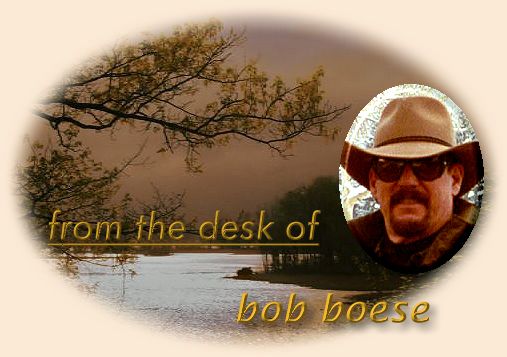|
I know an excellent fly fishermen who stinks at solitaire. For
reasons unexplained, he lacks the ability to see obvious red on
black number sequence play. As a casual kibitzer I am astounded
when the fisherman sits there with a brain cramp. But …
put the same fisherman to the task of reading a river and it's magical.
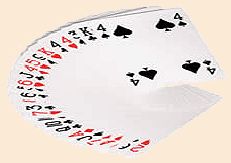
"You see that?" the guide said, and the lady at his side answered,
"What?" Normally, this wouldn't have mattered, except it was the
twentieth time in a quarter hour the conversation had been repeated.
Between 'What's' the guide had patiently explained, in precise and
excruciating detail, every 'What' his client was to be looking for.
She was not getting it, not at all, but everyone in hearing distance – there
were three of us on the water relatively close by – was getting a free
lesson on such things as how to watch your strike indicator, how to
spot fish between the rocks, and how to see a trout make a ripple-free
take of an emerger. Suddenly a trout was suicidal and her indicator
disappeared against the current, leading to another few minutes of
free lessons for the rest of us on how to fight and land the fish. A
beautiful rainbow was netted and the pink striped catch was displayed
for all to see, a photo was taken and then she said, "Do we leave now?"
If ever a guide was conflicted…
Solitaire, as the name suggests, is a game for one person, played
with a deck of 52 cards and is known in Britain as "patience"…
which you won't have if you keep losing. Curiously, there is no definitive
history of the many hundred games of solitaire, but the word solitaire is
of French origin, meaning "reclusive". Some forms of solitaire may be
700 years old, but historians are certain that between conquests
Napoleon is said to have spent time playing solitaire, and likely got
good at it on Saint Helena (the island to which he was exiled in 1815).
To people who are clever at solitaire, the raft of cards before them is
read at a glance, much as the experienced fisherman sees a stream.
As guides will explain, reading a stream is a matter of knowing what
to look for and where to look for it. Listing such places is no substitute
for seeing them, but here are a few to consider. There is a common
theme running through these notes and that is trout don't use more
energy than they have to. Slower water means less work to stay in
place and, if the food comes by or accumulates there, trout take
advantage of serendipity.
- In riffles and shallows, especially during insect hatches. Good
polarized glasses can allow you to sight fish here.
- In front of boulders, where the water speed in front is slowed
by the rock behind. This is a popular spot during heavy hatches where
insects may accumulate against the rock.
- Behind partially and fully submerged boulders or other protective
pockets. that offer protection from the current. Feeding lanes may exist
on both sides of the rock.
- Along banks where the current is slower and terrestrial insects
fall in. Free food without all the work.
- Under or inside undercut banks because it provides protection
from predators (herons, kingfishers, eagles, etc.) yet also offers the
feeding options of a stream bank.
- In front of or behind fallen timber and other surface features in
the stream that can trap insects.
- In smooth runs where the water is slower and quiet pockets
between subsurface ledges.
- In the shade of an overhanging streamside tree protected from view.
- In and around weed beds.
- In the tail of a run where the current is slower.
Many books have been published on solitaire and it is now estimated
there are between 300 and 600 identified solitaire games. On any given
stream there may be that many possibilities for trout holding locations.
So…which of the ones above should the fisherman choose? Here
are some suggestions.
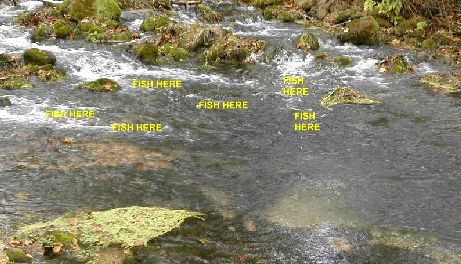
Sight fishing is always better than guessing. If the trout is not spooked
by the fisherman's presence, casting to a known target holds more
promise than blind fishing possible holding areas. I have watched
trout ignore every offering when I was a noisy careless fishermen,
and yet, when I was careful, have caught trout practically between
my legs. Polarized glasses are a must, even on gin clear streams, and
watching a trout's feeding pattern can give you a good idea of
appropriate patterns.
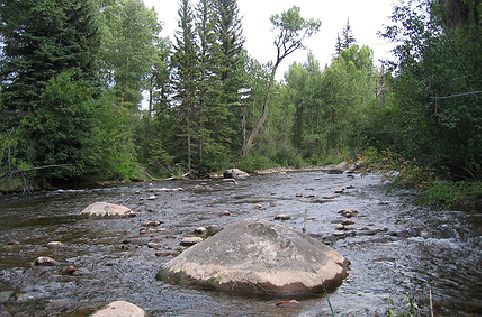
Submerged boulders are easier to fish than partially submerged
ones because there is not a riffle around them to made a good
presentation difficult. Trout do not seem to have a particular
preference but a nymph bounced over a submerged boulder
may enter a feeding lane that is impossible to reach with part
of the rock out of the water. Also, a good drift can be had on
either side (near or far) of a submerged boulder, opening up
even more feeding lanes.
Smooth runs are fun to fish because it is easy to get a good
layout on the initial cast and easy to mend to get a good drift.
Sometimes a good drift is more important than the perfect
holding area because your fly is in a fish attracting position
much longer and you can cover a lot of fishable water. In
wide runs it is often profitable to stand in the middle of the
stream and cast 360 degrees.
Banks are always a good choice if you have seen grasshoppers,
ants or beetles near the stream. Undercuts and under trees are
excellent choices, but require a much more accurate cast. A
good drag-free drift would find a terrestrial imitation in the right
location if it were no more than 12 inches from the bank. Strikes
are vicious.
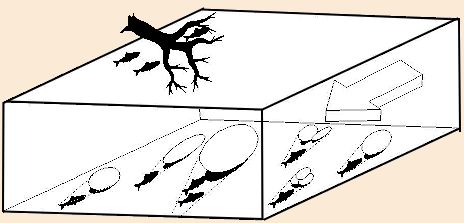
Any stream will have clues as to how to identify the red jack to
put on the black queen. Sometimes it's obvious and at others it
may be hidden behind the club ten. Many fish holding features,
like boulders or riffles, are obvious even from the road and others
require careful study of the water. The best way to get better at
finding trout is experience and practice…and patience. ~ Bob Boese (coach)
About Bob:
Robert Lamar Boese has fly fished for five decades. He is an
environmental negotiator, attorney and educator who has provided
environmental legal services for more than thirty-three years including
active duty with the U.S. Coast Guard and Department of Justice. He is a
well known fly tyer with several unique patterns to his credit. He has
developed and authored federal and state regulatory programs
encompassing a broad spectrum of environmental disciplines, has
litigated environmental matters at all levels of the federal and state
court systems, and is a qualified expert for testimony in environmental
law. He has authored over 60 published text chapters, comments or
articles on environmental matters, is a member of the Colorado, District
of Columbia and Louisiana Bar Associations, and is a certified mediator.
In addition to his legal practice, Mr. Boese has been a high school
teacher, an associate professor of Environmental Law and Public Health,
has authored numerous fiction and sports publications, and is a softball
coach and nationally certified volleyball referee. He is the president
of the Acadiana Fly Rodders in Lafayette, Louisiana and editor of
Acadiana on the Fly. He has been married for thirty years and is the
father of two fly fishing girls (25 and 21). For additional information
contact: Boese Environmental Law, 103 Riviera Court, Broussard, LA 70518
or call 337.856.7890 or email coachbob@ymail.com.
|
